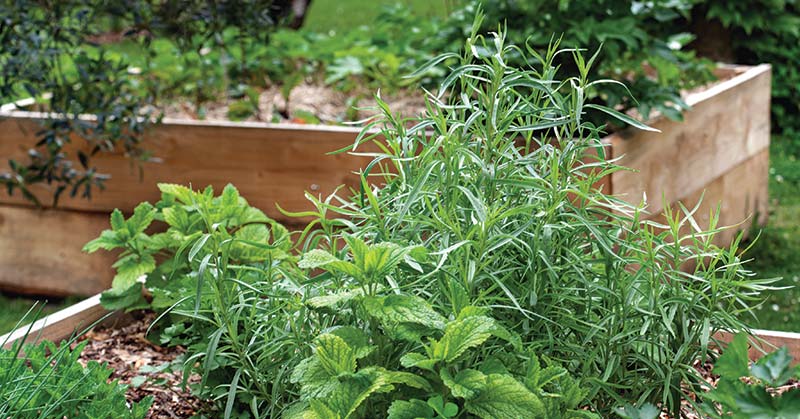Gardening isn’t just for those with ample outdoor space. In fact, growing a flourishing indoor herb garden is a wonderful way to bring freshness into your home, regardless of the size. Not only do these gardens provide fresh herbs at your fingertips, but they also add a touch of greenery to your living space.
Here’s a comprehensive guide on how to start your very own indoor herb garden.
Step 1: Choosing the Right Herbs
Start by selecting herbs that you frequently use in your cooking. Common choices include basil, parsley, cilantro, mint, thyme, and oregano. These herbs are not only culinary favorites but also adapt well to indoor conditions.
Step 2: Selecting the Perfect Spot
Herbs thrive in natural light. A windowsill that receives at least six hours of sunlight per day is ideal. South-facing windows typically provide the most sunlight, but east or west-facing windows also work well.
If natural light is limited in your home, consider using grow lights.
Step 3: Picking the Right Pots
Good drainage is crucial for herb plants. Choose pots with drainage holes and place them on saucers to catch excess water. Terracotta pots are a popular choice because they allow soil to breathe and help prevent overwatering.
Step 4: The Soil Matters
Use a high-quality potting mix, specifically designed for container plants. Avoid using garden soil, as it can be too dense and might contain pests or diseases.
Step 5: Planting Your Herbs
You can start your herb garden from seeds or buy young plants from a nursery. If starting from seeds, follow the planting instructions on the seed packet. For young plants, gently remove them from their containers, loosen the roots, and plant them in the pots.
Step 6: Watering Wisely
Herbs don’t like to be overwatered. Check the soil before watering; if the top inch is dry, it’s time to water. Be sure to water thoroughly, allowing excess water to drain out.
Step 7: Fertilizing for Growth
Feed your herbs with a balanced, water-soluble fertilizer every four to six weeks. However, be cautious not to over-fertilize, as this can harm the plants.
Step 8: Pruning and Harvesting
Regular pruning encourages growth and prevents your herbs from becoming leggy. Always snip off the top leaves, which will encourage the plant to grow outwards instead of upwards.
Harvest your herbs as needed for cooking, but never remove more than one-third of the plant at a time.
Step 9: Dealing with Pests and Problems
Keep an eye out for pests like aphids or spider mites. If you notice pests, treat your plants with a natural insecticide or a mild soap solution. Also, watch out for signs of disease, such as yellowing leaves or mold.
Step 10: Enjoying Your Harvest
Now comes the best part – using your fresh herbs in cooking! Fresh herbs can elevate the flavor of any dish, from soups and salads to sauces and roasts.
Conclusion
Starting an indoor herb garden is a rewarding endeavor that enhances your cooking and beautifies your living space. With a little care and attention, you can enjoy a bountiful supply of fresh herbs year-round.
FAQs on How do I make an Indoor Herb Garden
Q: What are the best herbs to grow in an indoor garden?
A: The best herbs for an indoor garden are those that thrive in indoor conditions and are commonly used in cooking. These include basil, parsley, cilantro, mint, thyme, oregano, and chives.
Q: How much sunlight do indoor herbs need?
A: Most herbs require at least six hours of sunlight per day. A south-facing windowsill is ideal, but east or west-facing windows can also work. If you don’t have enough natural light, consider using grow lights.
Q: What type of pots should I use for my indoor herb garden?
A: Choose pots with drainage holes to prevent waterlogging. Terracotta pots are a good option as they allow the soil to breathe, but any pot material will work as long as there’s adequate drainage.
Q: What kind of soil is best for indoor herbs?
A: Use a high-quality potting mix designed for container plants. This ensures good drainage and aeration, which are key for healthy herb growth.
Q: How often should I water my indoor herbs?
A: Water your herbs when the top inch of the soil feels dry. Overwatering can be detrimental, so ensure the pot has good drainage and avoid letting the herbs sit in waterlogged soil.
Q: Do indoor herb gardens require fertilizer?
A: Yes, fertilize your indoor herbs every four to six weeks with a balanced, water-soluble fertilizer. Be careful not to over-fertilize, as this can harm the plants.
Q: How do I prune and harvest herbs from my indoor garden?
A: Regularly prune your herbs by snipping the top leaves. This encourages bushier growth. Harvest by cutting off what you need for cooking, but don’t remove more than one-third of the plant at a time.
Q: Can I start my indoor herb garden from seeds?
A: Absolutely! Starting herbs from seeds is a cost-effective way to begin your garden. Follow the instructions on the seed packet for planting depth and spacing.
Q: How do I deal with pests in my indoor herb garden?
A: Inspect your plants regularly for signs of pests. If you find any, use a natural insecticide or a mild soap solution to treat the plants. Good air circulation and proper watering can help prevent infestations.
Q: Can I move my indoor herbs outdoors?
A: Yes, you can move your indoor herbs outdoors, but do so gradually. Herbs need to acclimate to the change in environment, so start by placing them outside for a few hours a day and gradually increase their outdoor time.




